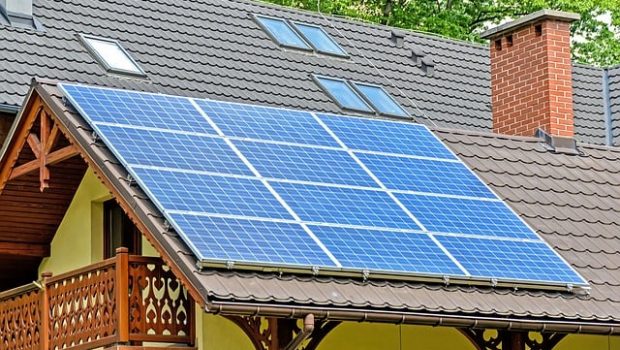How Solar Technology Saves Money, Resources and Lives
Despite the Trump Administration’s crusade to repeal any progress toward renewable energy, there is a renewable energy movement happening within recent years among homeowners. With more evidence of climate change surfacing, more people are advocating a more energy-conscious lifestyle. Here is a look at how solar power can cut back substantially on American energy use — without changing energy use habits — in order to save money, and in the long run, save lives.
Solar Power vs. Electricity Bills
When someone invests in solar power, they can expect a return. It won’t happen overnight, but rest assured, there is no gamble involved. According to Eco Energy Services, “Americans, 89 percent, are in favor of expanding the use of solar power. Out of those surveyed, 40 percent of homeowners have seriously considered installing solar panels. The primary reason they have for wanting to go solar is to save money on utility bills. Secondarily, they want to help the environment.” However, most are still reluctant to go completely solar due to their location.
Electricity
Most power plants nationwide gather their energy from a variety of fossil fuels like coal, natural gas, and oil — while others can gather their energy from hydroelectric dams and wind farms. The actual cost of electricity isn’t just the sum of the electricity that is personally used every minute but the running of the power plants, and other capricious government regulations can be included in the bill as well.
To determine if solar is the best option financially, get a yearly total of how much was spent on electric, divide by 12, and that is the average paid bill monthly — keep note that electricity steadily rises in prices per year. In the last 10 years, electricity rates have gone up nationally by 20 percent.
Solar
Determining the return on investment for solar panels differs by state. One way to figure out the price is to look into a solar lease — like electricity, the service is paid monthly. Finding a solar lease for a particular area is as easy as contacting a local solar panel provider, and consumers can go over the monthly payment and compare it to their electric bill. Google also has a service for those interested in getting solar panels called Project Sunroof, where the user can enter their home address and the square footage of their house to get a long-term estimated net savings for a solar roof in that particular area.
Installing solar panels, however, is an investment. Which means it can be costly at first. The long-term savings is where the reward will be found financially. There is also a solar investment tax credit for those that buy solar panels instead of leasing them, which is currently a 30 percent deduction on income taxes.
Who Cares?
A lot of major companies, actually. Companies whose products many people rely on a daily basis utilize solar energy as a power resource like Macy’s, Ikea, Kohl’s, Costco, Apple, Walmart and Target. These influences are being seen by developers, leading to the development of major public complexes like the “smart stadium.” According to Ohio University, the Golden 1 Center sports arena in Sacramento that holds up to 17,500 people and an 84-foot digital screen visible from every seat is “entirely solar-powered, either from the panels on its roof or from solar energy gathered nearby.” With more companies and developers seeing the potential in solar energy, future infrastructure and technology may be built with a reusable facelift, including public transportation.
A Future for the Future
One might imagine that studies from big publications — like National Geographic, saying, “Up to 75 percent of people could face deadly heat waves by 2100 unless carbon emissions plummet” — would get people more serious about solar energy. On the contrary, many people aren’t getting serious because the climate effects won’t get dangerous in “their lifetime.” What about the future generations?
If humankind destroys itself from the planet becoming too warm, Earth will be fine; it will repair itself over time without people inhabiting it. There’s only so much future generations can do. By progressively moving away from power plants that use fossil fuels for energy and progressing toward solar energy, it’s estimated that by 2030 the United States alone could avoid 100,995,293 pounds of CO2 emissions by replacing natural gas and coal with solar power.
The facts check out. Solar power can cut down on energy bills over time, eliminate the breaking down of carbon-heavy resources, and literally save future generations of dying from heat exhaustion. Solar energy shouldn’t just be a future option, but an urgent necessity.
















